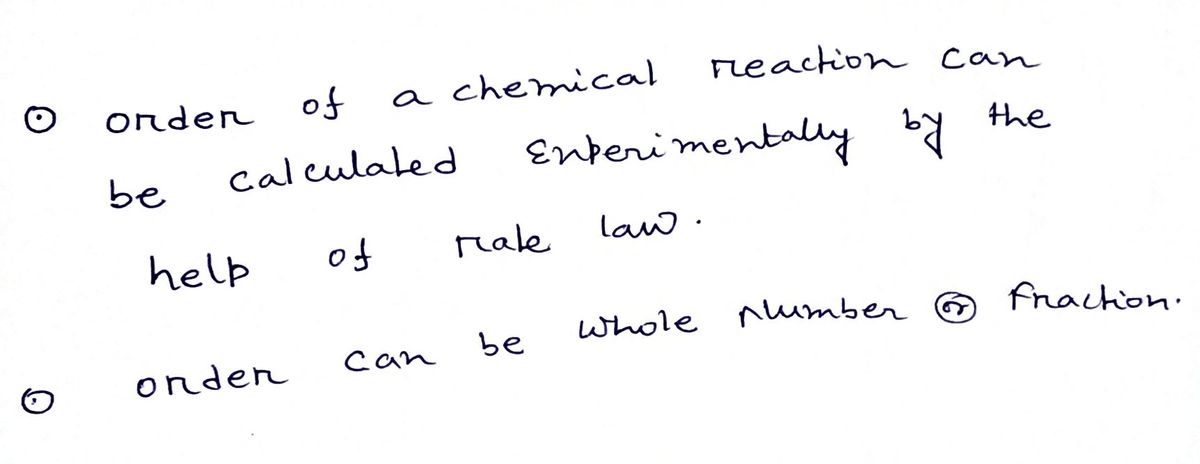The following initial rate data are for the reaction of mercury(II) chloride with oxalate ion: 2 HgCl, + C20,–2 Cr + Hg,Cl, + 2 Co, Experiment [HgCl],, M [C,0,?1o, M Initial Rate, M s- S.53x10-2 1.26x10-4 2.52x104 5.02x10-4 1.01x103 1 0.378 0.171 0.378 3 8.53x10-2 0.756 14 0.171 0.756 Complete the rate law for this reaction in the box below. Use the form k[A]"[B]" , where 'l' is understood for m or n and concentrations taken to the zero power do not appear. Don't enter 1 for m or n. Rate = From these data, the rate constant is 2.
The following initial rate data are for the reaction of mercury(II) chloride with oxalate ion: 2 HgCl, + C20,–2 Cr + Hg,Cl, + 2 Co, Experiment [HgCl],, M [C,0,?1o, M Initial Rate, M s- S.53x10-2 1.26x10-4 2.52x104 5.02x10-4 1.01x103 1 0.378 0.171 0.378 3 8.53x10-2 0.756 14 0.171 0.756 Complete the rate law for this reaction in the box below. Use the form k[A]"[B]" , where 'l' is understood for m or n and concentrations taken to the zero power do not appear. Don't enter 1 for m or n. Rate = From these data, the rate constant is 2.
Chemistry
10th Edition
ISBN:9781305957404
Author:Steven S. Zumdahl, Susan A. Zumdahl, Donald J. DeCoste
Publisher:Steven S. Zumdahl, Susan A. Zumdahl, Donald J. DeCoste
Chapter1: Chemical Foundations
Section: Chapter Questions
Problem 1RQ: Define and explain the differences between the following terms. a. law and theory b. theory and...
Related questions
Question
![The following initial rate data are for the reaction of mercury(II) chloride with oxalate ion:
\[ 2 \text{HgCl}_2 + \text{C}_2\text{O}_4^{2-} \rightarrow 2 \text{Cl}^- + \text{Hg}_2\text{Cl}_2 + 2 \text{CO}_2 \]
| Experiment | [HgCl₂]₀, M | [C₂O₄²⁻]₀, M | Initial Rate, M s⁻¹ |
|------------|-------------|---------------|----------------------|
| 1 | 8.53×10⁻² | 0.378 | 1.26×10⁻⁴ |
| 2 | 0.171 | 0.378 | 2.52×10⁻⁴ |
| 3 | 8.53×10⁻² | 0.756 | 5.02×10⁻⁴ |
| 4 | 0.171 | 0.756 | 1.01×10⁻³ |
Complete the rate law for this reaction in the box below.
Use the form k[A]^m[B]^n, where '1' is understood for m or n and concentrations taken to the zero power do not appear.
Don't enter 1 for m or n.
Rate = \_\_\_\_\_\_
From these data, the rate constant is \_\_\_\_\_\_ M⁻²s⁻¹.](/v2/_next/image?url=https%3A%2F%2Fcontent.bartleby.com%2Fqna-images%2Fquestion%2Fc4eca0ea-f525-4d8f-9259-04e892974916%2Ffa618da2-273c-4fcd-9e39-baf8a6b96cb8%2Fn01o365_processed.jpeg&w=3840&q=75)
Transcribed Image Text:The following initial rate data are for the reaction of mercury(II) chloride with oxalate ion:
\[ 2 \text{HgCl}_2 + \text{C}_2\text{O}_4^{2-} \rightarrow 2 \text{Cl}^- + \text{Hg}_2\text{Cl}_2 + 2 \text{CO}_2 \]
| Experiment | [HgCl₂]₀, M | [C₂O₄²⁻]₀, M | Initial Rate, M s⁻¹ |
|------------|-------------|---------------|----------------------|
| 1 | 8.53×10⁻² | 0.378 | 1.26×10⁻⁴ |
| 2 | 0.171 | 0.378 | 2.52×10⁻⁴ |
| 3 | 8.53×10⁻² | 0.756 | 5.02×10⁻⁴ |
| 4 | 0.171 | 0.756 | 1.01×10⁻³ |
Complete the rate law for this reaction in the box below.
Use the form k[A]^m[B]^n, where '1' is understood for m or n and concentrations taken to the zero power do not appear.
Don't enter 1 for m or n.
Rate = \_\_\_\_\_\_
From these data, the rate constant is \_\_\_\_\_\_ M⁻²s⁻¹.
Expert Solution
Step 1

Step by step
Solved in 4 steps with 4 images

Recommended textbooks for you

Chemistry
Chemistry
ISBN:
9781305957404
Author:
Steven S. Zumdahl, Susan A. Zumdahl, Donald J. DeCoste
Publisher:
Cengage Learning

Chemistry
Chemistry
ISBN:
9781259911156
Author:
Raymond Chang Dr., Jason Overby Professor
Publisher:
McGraw-Hill Education

Principles of Instrumental Analysis
Chemistry
ISBN:
9781305577213
Author:
Douglas A. Skoog, F. James Holler, Stanley R. Crouch
Publisher:
Cengage Learning

Chemistry
Chemistry
ISBN:
9781305957404
Author:
Steven S. Zumdahl, Susan A. Zumdahl, Donald J. DeCoste
Publisher:
Cengage Learning

Chemistry
Chemistry
ISBN:
9781259911156
Author:
Raymond Chang Dr., Jason Overby Professor
Publisher:
McGraw-Hill Education

Principles of Instrumental Analysis
Chemistry
ISBN:
9781305577213
Author:
Douglas A. Skoog, F. James Holler, Stanley R. Crouch
Publisher:
Cengage Learning

Organic Chemistry
Chemistry
ISBN:
9780078021558
Author:
Janice Gorzynski Smith Dr.
Publisher:
McGraw-Hill Education

Chemistry: Principles and Reactions
Chemistry
ISBN:
9781305079373
Author:
William L. Masterton, Cecile N. Hurley
Publisher:
Cengage Learning

Elementary Principles of Chemical Processes, Bind…
Chemistry
ISBN:
9781118431221
Author:
Richard M. Felder, Ronald W. Rousseau, Lisa G. Bullard
Publisher:
WILEY